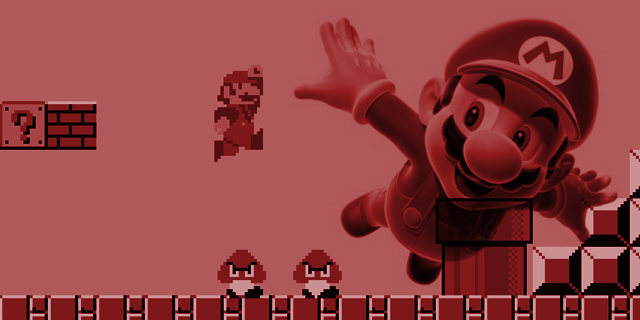
In From Pixels to Polygons, we examine classic game franchises that have survived the long transition from the 8- or 16-bit era to the current console generation.
Mario’s quest to save the Mushroom Kingdom from Bowser has taken many forms over the years, but with a level of polish and consistency that is largely unrivaled. Here’s our look at the series’ history, from auspicious beginnings to innovative leaps, as well as occasional identity crises.
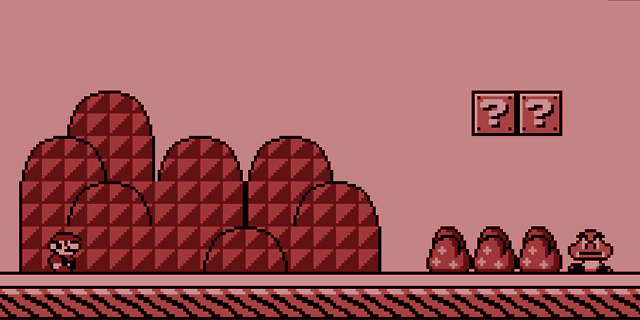
The plumber meets the Goomba
 Super Mario Bros. was revolutionary for its time, in just about every facet you can imagine. The graphics and sound were massive upgrades over previous console games, the world progression (both in difficulty and in length) was unheard of, and the controls were good enough that you never felt a death was cheap. My lack of skill haunts me to this day, but that didn’t stop my brothers and me from playing this almost non-stop for years. Until Super Mario Bros. 3 released.
Super Mario Bros. was revolutionary for its time, in just about every facet you can imagine. The graphics and sound were massive upgrades over previous console games, the world progression (both in difficulty and in length) was unheard of, and the controls were good enough that you never felt a death was cheap. My lack of skill haunts me to this day, but that didn’t stop my brothers and me from playing this almost non-stop for years. Until Super Mario Bros. 3 released.
Mario takes a trip
Super Mario Land was an odd entry in the series. While it played similarly to the original, it took some strange steps. Some enemies with shells would explode in your face, and the Fire Flower would ricochet off floors, walls and ceilings. This game also provided two side-scrolling shooter stages that would almost never be seen in another Mario game. – Eric Albuen
Super Mario Bros. 2 was strange, offbeat and allowed players to control Peach and Toad for the first time. The fact that all four playable characters had different abilities also meant that players had favorites, and differentiated Luigi from Mario for the first time. Of course, the strange nature of the game itself makes sense, knowing it was basically an entirely different game that Nintendo simply dropped Mushroom Kingdom protagonists into. A number of fan-favorite characters made their first appearances here, like Shy Guys and Birdo, though this was a one-time stop outside of the usual structure. Super Mario Bros. 2 didn’t take off over here at the time it released. Thankfully, it has enjoyed a large resurgence in popularity in the years since, due to compilations and re-releases.
Super Mario Bros. 3 added a world map, cooperative (and competitive) multiplayer, new minibosses and the themed worlds, and is considered by many to be a masterpiece of gaming. Super Mario World was as worthy a successor as you could hope for, with upgraded graphics, new moves, new powerups and smoother controls thanks to the power of the SNES. Cooperative play continued and Yoshi finally arrived, though most levels saw me chasing him more often than I rode him. It turned out to be Mario’s platforming swan song of the 2D console era, but with gameplay that still holds up even today, what an amazing one it was. – Shawn Vermette
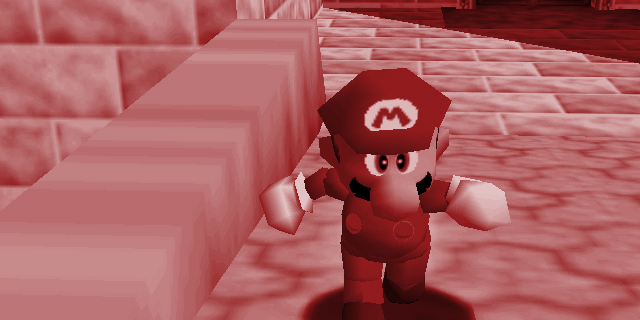
Breaking boundaries
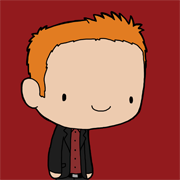 The jump to 3D was, in hindsight, a rough one. Go back to most N64 and PS1-era titles, and they haven’t aged well. The graphics are crude, the camera can be as difficult to fight as any enemy, and you could tell developers were in uncharted territory. You could also tell, just by walking into any Blockbuster, Toys R Us or classroom, how excited everybody was. This was 3D. What we’ve been waiting for. No game brought that sense of awe to the new generation more than Super Mario 64. People rented N64s for this game. Nintendo’s first leap into the 3D realm couldn’t have been made with a better flagship title. The camera was easy to use. Mario talked! You could run in any direction you wanted! Seriously, people would play the demo at a kiosk and just have a blast running around. The analog stick made controlling Mario a dream. If that wasn’t enough, you could fly. You. Could. Fly. Put on that hat, get a good jump and off you go, sailing into your dreams. It was almost too much. Add in great level design, music, a whopping 120 stars to collect and a hub overworld that’s still emulated today, and you’ve got an all-time classic.
The jump to 3D was, in hindsight, a rough one. Go back to most N64 and PS1-era titles, and they haven’t aged well. The graphics are crude, the camera can be as difficult to fight as any enemy, and you could tell developers were in uncharted territory. You could also tell, just by walking into any Blockbuster, Toys R Us or classroom, how excited everybody was. This was 3D. What we’ve been waiting for. No game brought that sense of awe to the new generation more than Super Mario 64. People rented N64s for this game. Nintendo’s first leap into the 3D realm couldn’t have been made with a better flagship title. The camera was easy to use. Mario talked! You could run in any direction you wanted! Seriously, people would play the demo at a kiosk and just have a blast running around. The analog stick made controlling Mario a dream. If that wasn’t enough, you could fly. You. Could. Fly. Put on that hat, get a good jump and off you go, sailing into your dreams. It was almost too much. Add in great level design, music, a whopping 120 stars to collect and a hub overworld that’s still emulated today, and you’ve got an all-time classic.
The little big game
Super Mario Land 2: 6 Golden Coins is to the first Super Mario Land as Super Mario Bros. 3 is to the first Super Mario Bros. The scope of the game is larger, there are themed zones on a world map and all of the sprites are larger and more lively. It’s also the first appearance of Wario. If you want SMB3 on the go (and you should), then this is the game to play. – Justin Last
Super Mario Sunshine got a tough rap. The GameCube was a great system, but Nintendo’s two big hitters (Mario and Zelda) didn’t have the impact they were hoping for. Wind Waker is a good game, but it wasn’t the Zelda most fans wanted at the time. Ditto Mario Sunshine; it’s good, but it’s not in the same league as Mario Bros 3, Super Mario World and, yes, Super Mario 64. But it wasn’t without merit. The tropical levels were absolutely beautiful to traverse. The colors, the colors! It nailed the tropical theme. It really did feel like Mario was on vacation. The F.L.U.D.D. jetpack was a curious addition, but totally mixed up the Mario gameplay. Maybe that was the problem? Should this project have been given to a different mascot? It’s hard to tell. Sunshine (and Wind Waker) have aged very well, a true testament to Nintendo’s ability to focus on fun, creative gameplay before story or presentation.
It’s hard to write about the next major 3D Mario games without gushing. We’ve seen Mario traverse Lands, Worlds and the Sun(shine). Only fitting that space would be next in Super Mario Galaxy and Super Mario Galaxy 2, two of the finest platformers ever created. The decision to make levels divided up into smaller, 360-degree planets, complete with their own gravity and obstacles, meant that each world was creative, fun and fresh. The overall story and hub world wasn’t as interesting in the first one, but Nintendo upped the ante in Mario Galaxy 2, eliminating it for a Mario-shaped spaceship and a more traditional level choice mechanic. This was Mario for the core, and we loved every minute of it. – Henry Skey
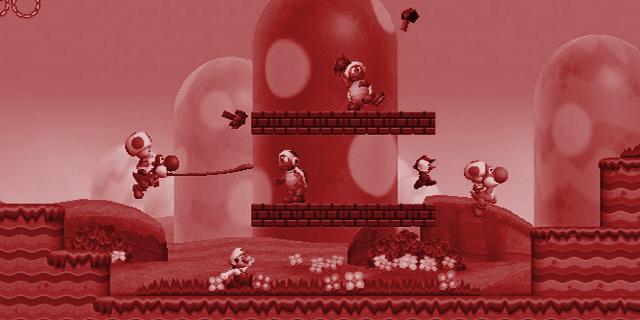
What’s old is New again
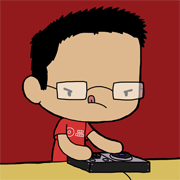 In 2006, Nintendo released New Super Mario Bros. on the DS. The game combined the classic 2D platforming formula with 3D polygonal characters. Like most Mario platformers, this played very similarly to the older ones, but this one introduced new powers Mario (or Luigi) could use in his adventure. NSMB introduced the Blue Shell power-up, allowing Mario to withdraw into his shell and protect himself; the Mega Mushroom, making him a giant and destroying anything and everything in one hit; and the Mini-Mushroom, letting him walk on top of water, jump higher and enter small pipes laid out throughout the game’s stages. Additionally, Mario took some of his moves from the 3D platformers and found way to put them to good use in the 2D world.
In 2006, Nintendo released New Super Mario Bros. on the DS. The game combined the classic 2D platforming formula with 3D polygonal characters. Like most Mario platformers, this played very similarly to the older ones, but this one introduced new powers Mario (or Luigi) could use in his adventure. NSMB introduced the Blue Shell power-up, allowing Mario to withdraw into his shell and protect himself; the Mega Mushroom, making him a giant and destroying anything and everything in one hit; and the Mini-Mushroom, letting him walk on top of water, jump higher and enter small pipes laid out throughout the game’s stages. Additionally, Mario took some of his moves from the 3D platformers and found way to put them to good use in the 2D world.
A nemesis redeemed
Wario Land: Super Mario Land 3 would bring Wario back into the spotlight from his appearance in Super Mario Land 2. Wario, wanting to restore his destroyed castle from the previous game, sets out to steal a golden statue and hold it for ransom. The game ultimately becomes a treasure-hunting game, and how much treasure he finds helps decide what kind of home he’ll be able to build. – Eric Albuen
2009 brought a new way to hate your friends: New Super Mario Bros. Wii. This introduced a four-player local co-op, as well as a slew of new powers for Mario, Luigi and the two Toads. This game also re-introduced the Koopalings into a modern Mario Bros. game. The gameplay formula remains unchanged for the 2D setting, and the design makes you and your friends work together to complete stages. If you were like my friends at all, the game would be made ten times more fun by picking each other up and throwing them off the stage into the endless abyss.
Nintendo would release two new games under the New label in 2012, putting a game on each of its platforms. New Super Mario Bros. 2 focused on something that’s always been a huge part of the Mario series: the coins. With the introduction of the Gold Flower, Mario would turn into King Midas and turn everything he touched into gold (coins). The Koopalings make another appearance, as well as the power-ups introduced in the first New Super Mario Bros. game. The game also feature a Coin Rush mode, in which you would have to collect as many coins as you can in a short amount of time. Using the 3DS’ StreetPass feature, players could challenge other players who owned the game to beat their Coin Rush mode score.
While New Super Mario Bros. U brought back the same four-player insanity of the Wii installment, the game introduced several new modes that make use of the GamePad. It allowed the player to produce platforms for the runners, to either help or hinder their progress. New modes like Boost Rush utilized this new feature, clearing levels as quickly as possible or earning extra lives without touching the ground. Challenge Mode was also introduced to test even the most skilled Mario players by making them perform various tasks for medals. – Eric Albuen
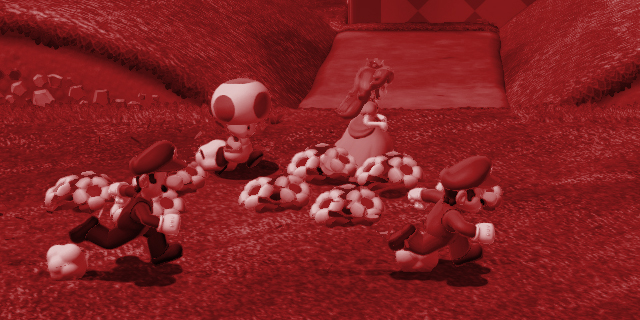
3D Land and beyond the goal pole

With the current generation, Nintendo has continued to iterate on tried and true concepts. 3D Land is miniature Galaxy 2, and there’s nothing wrong with that. 3D World, judging from its E3 reveal, looks to be 3D Land mixed with New Super Mario Bros., and it looks wonderful.
The dynamic dino
The criminally-underplayed Super Mario World 2: Yoshi’s Island was a prequel, and didn’t star the plumber. Yoshi had to escort Baby Mario and fight off hordes of new enemies, all while using traditional attacks like jumps and ground pounds, but also eggs. So, so many eggs. The visuals were totally overhauled, and still look great today. The only downside to this shy masterpiece? Baby Mario’s shrill cry when he gets knocked off your back. But can you think of a better incentive to retrieve him and shut him up? – Henry Skey
The new cat suit looks like a great replacement for the helicopter hat, and the now standard “cooperative on paper, combative in practice” multiplayer will make 3D Land great to play twice: once by myself to complete to 100%, and once with my wife to test our marriage. It would be easy to complain about Nintendo polishing and creating new levels, but I won’t do that. Every time I boot up a Mario platformer I have a great time playing it, and the modern entries to the series are no different.
My outlook on the future of Mario, again, could sound like complaining, but I think as long as the formula works, Nintendo will stick close to it. There’ll be new power-ups to supplement the constant mushroom, fire flower and starman. New levels that manage to feel familiar (never stop making levels that use the red/blue floor flippers – I love those!). New secondary objectives and game modes that make the game harder for those looking for additional challenge. If Nintendo changes things up in the future, though, I think it will be little things, like seeing an end to lives and more returning enemies like Birdo and Mouser. – Justin Last
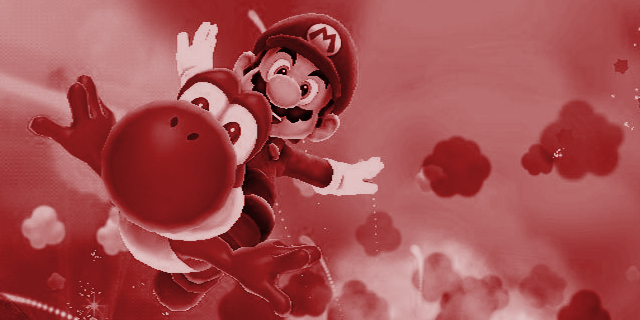
What’s the peak of the Super Mario series?
 Shawn: For me, the peak has to be Super Mario Bros. 3. I’ve loved plenty of the Mario games since then, but none of them have ever captured my attention quite like it. That said, is it really a peak when it continues to push the edge of the genre forward for another two decades? That seems more like a plateau to me.
Shawn: For me, the peak has to be Super Mario Bros. 3. I’ve loved plenty of the Mario games since then, but none of them have ever captured my attention quite like it. That said, is it really a peak when it continues to push the edge of the genre forward for another two decades? That seems more like a plateau to me.
 Henry: What’s the best Van Gogh painting? The best Hitchcock film? The most poignant Calvin and Hobbes comic? Few series can even say they have one game as good as Super Mario Bros. 3, Super Mario World, Super Mario 64 and Super Mario Galaxy 1 and 2. The Mario series has many masterpieces of gaming. My vote goes to Super Mario Galaxy 2, if only because I think saying the series peaked a long time ago is a bit pessimistic.
Henry: What’s the best Van Gogh painting? The best Hitchcock film? The most poignant Calvin and Hobbes comic? Few series can even say they have one game as good as Super Mario Bros. 3, Super Mario World, Super Mario 64 and Super Mario Galaxy 1 and 2. The Mario series has many masterpieces of gaming. My vote goes to Super Mario Galaxy 2, if only because I think saying the series peaked a long time ago is a bit pessimistic.
 Eric: Super Mario World would probably take the cake for me, though I do like going back to SMB3 from time to time. From the introduction of Yoshi to the world constantly being changed with the colored switches, and all the secret paths this game had to offer made it a blast.
Eric: Super Mario World would probably take the cake for me, though I do like going back to SMB3 from time to time. From the introduction of Yoshi to the world constantly being changed with the colored switches, and all the secret paths this game had to offer made it a blast.
 Justin: Between the overworld map, the warp whistles, giant world, Kuribo’s shoe, and Bowser’s kids as world bosses, Super Mario Bros. 3 is my go-to Mario adventure.
Justin: Between the overworld map, the warp whistles, giant world, Kuribo’s shoe, and Bowser’s kids as world bosses, Super Mario Bros. 3 is my go-to Mario adventure.
In our next installment, we’ll be so Tensei. Shin Megami Tensei, that is! For more, check out the archive.



















